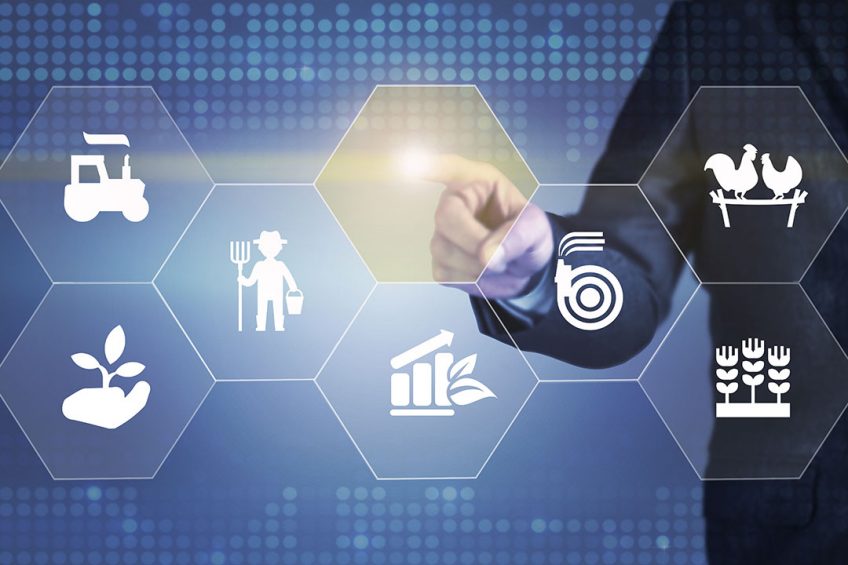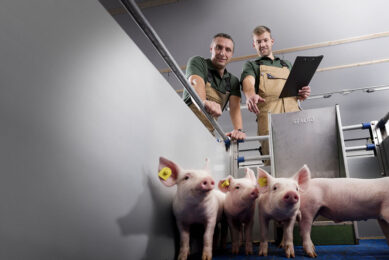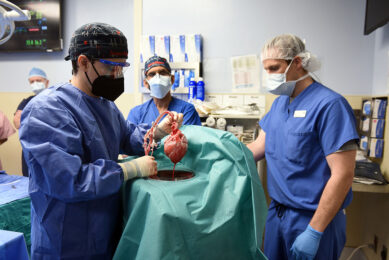How to make big (pig) data available in 5 steps

A new study on precision farming has demonstrated the importance of collecting big data on swine farms, having those transformed into decision making tools and thus maximising profitability. Essentially, such a management system needs to be developed in 5 steps.
The study was recently published in the scientific publication Animal Frontiers, a journal of the American Society of Animal Science. The article was authored by a range of pig experts from Spain, Ireland and Japan.
In the article, the authors explain that key in these developments are new technologies such as electronic feeders and artificial intelligence systems capturing big data will provide a better understanding of animal requirements and behaviour, increasing efficiency and sustainability.
In addition, biosecurity can be improved using tracking devices for farm staff, recording movements real-time to decrease disease risks and consequently, improve health and productive performance.
No strong farm analysis purpose
The authors explain that most of the data used by farmers have been related to the management of farm tasks, but not too much for analysis purposes. Most of them related to sow reproductive data or basic production summaries. Integration of data from different sources, think of slaughterhouse, lab, reproduction, health, or medicine use, was difficult and rare, according to the authors. And on top of that, there were few data support services assisting swine producers to get any further.
Examples of using data in arable farming has shown that it is possible, the authors wrote. Ideally, such a management system should consist of 5 steps:
 Data collection
Data collection
The authors wrote that data are the raw material of the system and can come from human inputs or sensor-robots. Until now, data consisted only of numbers, but the sector is coming closer to the use of images and sounds.
 Data processing
Data processing
Data processing is related to the manipulation of data, including several tasks such as validation, sorting or aggregation, management of outliers and missing data. The objective is the correct set-up of databases that allows proper information generation, overcoming interoperability problems.
 Reporting
Reporting
From sow cards or working lists up to multivariate regression analysis to define the optimum value for a certain key performance indicator, every farm or company must decide the information needed from every work level, not forgetting that this could be either technical, economical, or a combination of the 2.
 Distribution
Distribution
The objective of this step is sending the right information to the right person at the right time. User preferences must also be considered and can include various types.
 Analytics and decision making
Analytics and decision making
Information must be readable and understood by the recipient, and the recipient must have sufficient time to make key decisions. Until now, analytics were aimed at being mainly explanatory, but due to the amount of quality data available, predictive analytics is becoming a key step.
Read more on the B-eSecure system
The authors mentioned much technology which can help acquire and interpret data. They mentioned for instance:
Data collection performed by robots and sensors
This technology includes a range of technology that can measure, observe and interpret pig and sow behaviour. Some are well-known, others are brand new. Think of:
- Oestrus behaviour: PigWatch, by Canadian company Ro-Main is a computerised artificial insemination management system designed to predict the best time to inseminate recently weaned sows. It consists of motion sensors installed on the top of every stall in the breeding area, a data analysis module and a software user interface.
- Eating behaviour in gestating sows: This behaviour is usually monitored using an ear transponder with radio frequency identification (RFID) that identifies the individual animal at each visit to the feeder.
- Eating behaviour in lactating sows: Similar electronic sow feeder systems are also available for lactating sows, which are individually housed. New options allowing the sow to choose how much and when to eat have recently arrived at the market (Gestal Solo, Jyga Technologies), thus enabling the farmer to know the lactation intake pattern. ESF systems are also available for grow-finishing pigs.
- Early disease detection based on image analytics: A motion-based video system for early disease detection has recently been described.
Environment-oriented data
Thanks to the development of new technologies, farmers are now able to continuously monitor, air quality, temperature, and humidity in real time via sensors. Recently, EU-funded ProHealth project showed how big data could be used to fight diseases.
Real-time biosecurity control
Models to assess biosecurity are based on scoring systems or survey forms. A new approach addresses biosecurity is the use of real-time devices (B-eSecure System) to control the internal movement of farm staff.
The article was written by Carlos Piñeiro, Maria Aparicio, Joaquín Morales and María Rodríguez, PigChamp Pro Europa, Spain; Edgar García Manzanilla, Teagasc, Ireland; Yuzo Koketsu, Meiji University, Japan.












